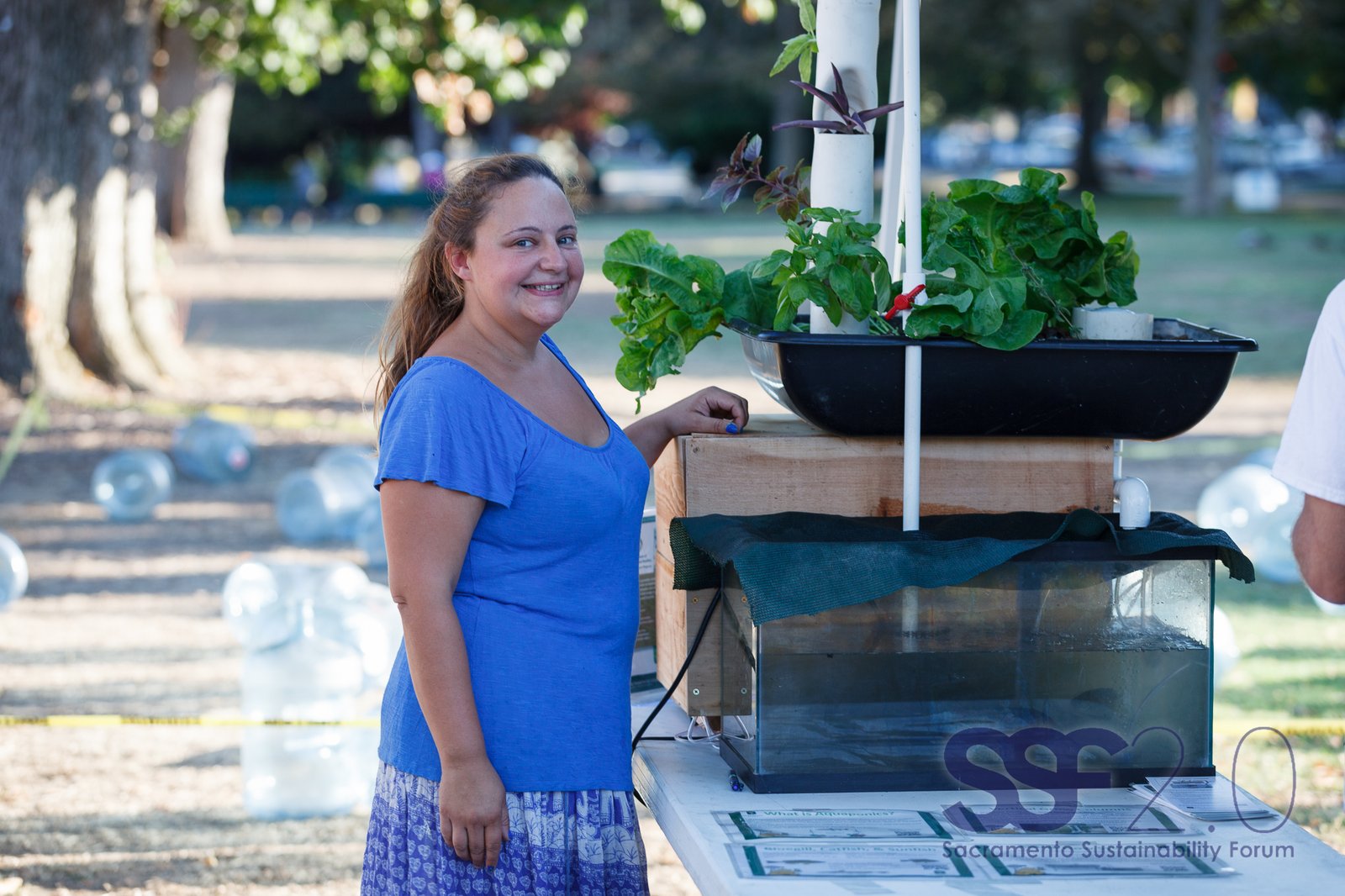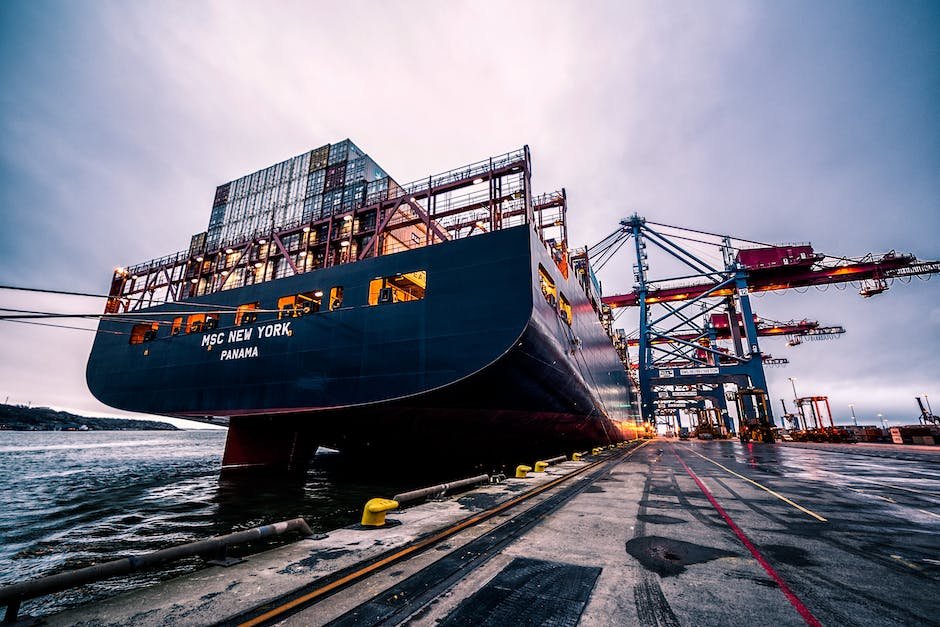Now Reading: How to Build a DIY Off-Grid Aquaponics System
-
01
How to Build a DIY Off-Grid Aquaponics System

How to Build a DIY Off-Grid Aquaponics System
Imagine being able to grow your own fresh vegetables and fish, all while living off-grid and completely self-sustained. Sounds like a dream, doesn’t it? Well, with a DIY off-grid aquaponics system, this dream can become a reality. Aquaponics combines the principles of aquaculture, or fish farming, with hydroponics, the cultivation of plants in water, to create a symbiotic ecosystem that is both efficient and environmentally friendly. In this article, we will guide you step by step on how to build your very own off-grid aquaponics system, so you can enjoy the fruits of your labor while treading lightly on the planet. Get ready to delve into the world of aquaponics, as we embark on an exciting journey to create a sustainable oasis right in your backyard.
Table of Contents
- Planning the System: Steps to Consider and Design Your Off-Grid Aquaponics Setup
- Choosing the Right Components: Essential Equipment and Materials for a Successful Build
- Building the Foundations: Constructing a Sturdy and Functional Off-Grid Aquaponics System
- Optimizing Aquaponics Performance: Key Tips for Maintaining Water Quality, Oxygen Levels, and Nutrient Balance
- Ensuring Sustainability: Energy Options and Conservation Strategies for an Eco-Friendly Off-Grid System.
- Q&A
- To Conclude

Planning the System: Steps to Consider and Design Your Off-Grid Aquaponics Setup
Steps to Consider and Design Your Off-Grid Aquaponics Setup
Are you ready to embark on the exciting journey of setting up an off-grid aquaponics system? Before diving in, it’s important to plan your setup carefully to ensure success. Here are some essential steps to consider when designing your off-grid aquaponics system:
- Location: Start by choosing the perfect spot for your aquaponics setup. Look for a location that receives ample sunlight throughout the day and has easy access to water sources.
- System Size: Determine the size of your system based on the available space and your needs. Consider the number of plants and fish you want to cultivate and calculate the necessary dimensions for your grow beds, fish tanks, and filtration systems.
- Energy Source: Since you’re going off-grid, it’s crucial to decide on a reliable and sustainable source of energy. Explore options like solar panels, wind turbines, or micro-hydroelectric generators to power your system.
- System Design: Sketch out a detailed design of your system, considering the flow of water, plumbing connections, and the placement of components. Ensure that each component is easily accessible for maintenance and monitoring.
- Equipment and Materials: Compile a list of the necessary equipment and materials for your aquaponics setup. This may include grow beds, fish tanks, pumps, plumbing supplies, and media filtration systems. Don’t forget to allocate a budget for these items.
- Water Management: Develop a water management plan to ensure efficient circulation and filtration. Consider adding extra sources of water, such as rainwater collection systems, for sustainability.
- Monitoring and Maintenance: Implement a monitoring system to keep tabs on water quality, temperature, pH levels, and overall system performance. Regular maintenance, including water testing and component inspections, is vital for the long-term success of your setup.
By following these steps, you are one step closer to designing and building an innovative and self-sufficient off-grid aquaponics system. Remember to adapt the steps to your specific needs and enjoy the thrill of cultivating your own fresh produce and fish in an environmentally friendly manner.

Choosing the Right Components: Essential Equipment and Materials for a Successful Build
Essential Equipment:
- Power Supply: A reliable power supply is crucial for a successful build. Look for a high-quality unit with enough wattage to support all your components.
- Processor (CPU): The brain of your computer, the CPU determines its overall performance. Choose a processor that fits your specific needs and is compatible with your motherboard.
- Memory (RAM): Adequate RAM ensures smooth multitasking and seamless performance. Opt for DDR4 RAM modules with sufficient capacity for your tasks.
- Storage: Consider a combination of SSD (Solid State Drive) for faster boot times and program loading, and HDD (Hard Disk Drive) for storing large files.
- Motherboard: The foundation of your build, the motherboard connects all your components. Look for one that supports your chosen CPU and has the necessary features for your needs.
Materials:
- Cables: Don’t forget various cables for connecting your components, such as SATA cables for drives and power cables for peripherals.
- Thermal Paste: Applying thermal paste is essential for cooling your CPU. Be sure to use a high-quality paste to ensure efficient heat transfer.
- Screws: Keep a variety of screws on hand for securing components and attaching your motherboard to the case.
- Tools: Invest in a good set of screwdrivers, pliers, and cable ties to make assembly easier and ensure a clean and organized build.
- Case: Choose a case that not only fits your components but also provides adequate cooling and airflow to keep your system running smoothly.
Remember, choosing the right components and materials is crucial for a successful build. Take your time researching and make informed decisions based on your specific needs and budget. Don’t hesitate to seek advice from experts or online communities to ensure a smooth and enjoyable building experience.
Building the Foundations: Constructing a Sturdy and Functional Off-Grid Aquaponics System
In order to create a reliable and efficient off-grid aquaponics system, it is crucial to focus on the construction of a solid foundation. Starting with a sturdy base ensures the long-term stability and functionality of the system, allowing for optimal growth of both plants and fish.
Here are some key steps to consider when building the foundation:
- Site selection: Choose an area with direct sunlight exposure for at least six hours a day. This will help maximize the photosynthesis process and promote healthy plant growth. Additionally, ensure the ground is level and free from any potential obstructions.
- Materials: Select high-quality, durable materials such as concrete, cinder blocks, or treated lumber to construct the base. These materials should withstand various environmental conditions while providing a solid support structure.
- Design: Create a design that suits your specific needs and available space. Consider factors such as the size of the aquaponics system, the weight it will bear, and potential expansion in the future. A well-thought-out design will contribute to the functionality and ease of maintenance.
- Leveling and stability: Ensure the foundation is completely leveled to avoid water leakage and structural issues. Use a spirit level to check for accuracy. Additionally, reinforce the base with bracing or supports to enhance stability, especially in areas prone to earthquakes or strong winds.
By prioritizing these steps during the construction of your off-grid aquaponics system, you’ll build a foundation that can withstand the test of time and support the growth of healthy plants and fish.

Optimizing Aquaponics Performance: Key Tips for Maintaining Water Quality, Oxygen Levels, and Nutrient Balance
When it comes to maximizing the performance of your aquaponics system, ensuring optimal water quality, oxygen levels, and nutrient balance are of utmost importance. Here are some key tips to help you maintain these essential factors:
1. Regular Water Testing:
- Monitor pH levels: Keep a close eye on the acidity or alkalinity of your water using pH testing kits. Aim for a neutral pH level between 6.8 and 7.2 to create the perfect environment for your plants and fish.
- Test ammonia and nitrite levels: High levels of ammonia and nitrites can be harmful to your fish. Regularly check these parameters and ensure they remain at safe levels, preferably close to zero.
- Check for nitrates: While nitrate is a vital nutrient for your plants, excessive levels can be detrimental to fish health. Maintain nitrates below 40 mg/L to maintain a healthy balance.
2. Proper Aeration and Oxygenation:
- Invest in quality aeration equipment: Oxygenate the water by using air stones, diffusers, or aerating pumps. This promotes healthy root growth in plants and ensures sufficient oxygen levels for your fish.
- Monitor dissolved oxygen levels: Measure the concentration of oxygen in your water regularly. To ensure optimal levels, aim for a range between 5 and 7 mg/L for the well-being of both plants and fish.
3. Fine-tuning Nutrient Balance:
- Monitor macronutrients: Regularly check the levels of essential macronutrients such as nitrogen, phosphorus, and potassium. Adjust their concentration as required to maintain a balanced nutrient profile for maximum plant growth.
- Ensure micronutrient availability: Monitor and supplement micronutrient deficiencies if necessary. Iron, manganese, zinc, and copper are some micronutrients vital for plant health, so it’s crucial to maintain their optimal levels.
- Utilize natural remedies: Consider incorporating organic and natural solutions, such as compost teas or fish emulsion, to provide a steady supply of nutrients while promoting long-term soil health.
By implementing these key tips, you can optimize your aquaponics system’s performance, leading to healthier plants, thriving fish, and a successful overall operation. Remember, consistent monitoring and adjustment are the pillars of maintaining water quality, oxygen levels, and nutrient balance.
Ensuring Sustainability: Energy Options and Conservation Strategies for an Eco-Friendly Off-Grid System
When it comes to creating an eco-friendly off-grid system, there are a variety of energy options and conservation strategies to consider. These choices not only promote sustainability but also help reduce reliance on traditional power sources. By exploring alternative energy sources and implementing smart conservation methods, you can truly embrace an off-grid lifestyle while minimizing your carbon footprint.
Energy Options:
- Solar Power: Harnessing the energy of the sun through solar panels is a clean and abundant way to generate electricity. By installing solar panels on your property, you can benefit from free and renewable energy for your off-grid system.
- Wind Energy: Utilizing wind turbines can be another effective energy option, especially if you live in a windy area. The power of the wind can be converted into electricity, providing you with a sustainable source of power.
- Hydroelectric Power: If you have access to running water like a stream or river, hydroelectric power can be harnessed using turbines. This method enables you to generate electricity in an environmentally friendly way.
Conservation Strategies:
- Energy-Efficient Appliances: Opt for energy-efficient appliances such as LED lights, low-consumption refrigerators, and smart thermostats. These appliances minimize energy wastage and ensure that your off-grid system operates efficiently.
- Insulation and Passive Heating/Cooling: Proper insulation plays a crucial role in minimizing energy consumption. Ensure that your off-grid home is well-insulated to retain heat during winter and stay cool during summer without excessive use of energy.
- Water Conservation: Implement practices like collecting rainwater, using low-flow fixtures, and reusing greywater to minimize water wastage in your off-grid system. By conserving water, you decrease both your environmental impact and reliance on external resources.
By carefully considering these energy options and adopting effective conservation strategies, you can build an eco-friendly and sustainable off-grid system that not only benefits the environment but also provides you with reliable and renewable power.
Q&A
What is aquaponics and why is it a popular choice for off-grid systems?
Aquaponics is a combination of aquaculture (raising fish) and hydroponics (growing plants in water). It is popular for off-grid systems because it allows for sustainable food production with minimal energy requirements, using the symbiotic relationship between fish and plants.
What are the essential components needed to build an off-grid aquaponics system?
To build an off-grid aquaponics system, you will need a fish tank, grow beds, a water pump, an aeration system, plumbing materials, suitable plants, and fish that can thrive in a controlled environment.
How does an off-grid aquaponics system work without electricity?
An off-grid aquaponics system can operate without electricity by utilizing gravity as the primary force that moves water between the fish tank and grow beds. By positioning the grow beds higher than the fish tank, the water naturally flows downwards due to gravity, minimizing energy consumption.
Can I use solar power to run my off-grid aquaponics system?
Absolutely! Solar power is an excellent alternative to electricity for running an off-grid aquaponics system. You can use solar panels to generate electricity to power the water pump, aeration system, and any other electrical components.
What plants can be grown in an off-grid aquaponics system?
A wide variety of plants can be grown in an off-grid aquaponics system, including leafy greens, herbs, tomatoes, cucumbers, and peppers. However, it’s important to choose plants that have similar water and nutrient requirements to ensure optimal growth in the system.
Which fish are the best for an off-grid aquaponics system?
Fish such as tilapia, trout, catfish, and carp are popular choices for off-grid aquaponics systems. These fish species are hardy, adaptable, and can tolerate fluctuating water conditions, making them well-suited for self-sustaining aquaponics setups.
What are the key maintenance tasks for an off-grid aquaponics system?
Regular maintenance tasks for an off-grid aquaponics system include monitoring water quality parameters (such as pH, ammonia, and nitrate levels), feeding the fish, cleaning the filters, and pruning plants as needed. Consistency and attentiveness are crucial for the system’s success.
Can I build a DIY off-grid aquaponics system if I have limited experience?
Yes, building a DIY off-grid aquaponics system is possible even with limited experience. There are numerous online resources, tutorials, and communities that can provide guidance and support throughout the process. However, it is essential to acquire basic knowledge about aquaponics principles before starting your project.
What are the benefits of an off-grid aquaponics system?
Off-grid aquaponics systems offer several benefits, including sustainable food production, reduced reliance on external resources, lower energy consumption, and the ability to grow food in remote locations where traditional agriculture is difficult. Additionally, the system provides fresh fish and organic produce all year round.
To Conclude
As we conclude our journey into the realm of off-grid aquaponics, we hope the knowledge and inspiration gathered here will continue to ripple through your eco-conscious endeavors. Armed with the power of DIY ingenuity, you now possess the essential know-how to construct your very own sustainable oasis, teeming with the harmony of nature.
Embrace the thrill of self-sufficiency as you witness the marriage between the delicate dance of aquaculture and the flourishing wonders of hydroponics. With a dedicated mindset and minimal resources, you have the ability to nurture a bountiful ecosystem, all within the confines of your own backyard or humble abode.
Be bold and venture forth into uncharted waters, pioneering a new era of sustainable living. Feel the connection to the earth deepen as you witness your plants thrive, snuggled comfortably atop their floating pedestals, nourished by the organic bounty created by finned companions below.
However, let us not forget the sweat, the toil, and the inevitable setbacks that may come your way. Building your own off-grid aquaponics system may not always be a smooth journey. Yet, each obstacle overcome only fuels the fire of creativity and resilience within you.
In a world yearning for alternative food production methods, you stand as an innovative superhero, crafting sustainable solutions with your bare hands. Your off-grid aquaponics system becomes a beacon of hope, forming a bridge between nature’s wisdom and our modern technological realm.
As you embark on your aquaponics odyssey, your newfound knowledge will undoubtedly evolve and adapt over time. Experiment, tinker, and explore the endless possibilities that lie ahead. Foster a sense of wonder and curiosity, for in this journey, there are no limits to the abundance you can harvest or the inspiration you can share.
So, fellow aspiring aquaponic artisans, we bid you farewell on this final note. Let the rhythmic symphony of nature guide your every move, and may your off-grid aquaponics system stand as an emblem of sustainability and self-sufficiency for generations to come.
As an affiliate, my content may feature links to products I personally use and recommend. By taking action, like subscribing or making a purchase, you’ll be supporting my work and fueling my taco cravings at the same time. Win-win, right?
Want to read more? Check out our Affiliate Disclosure page.





